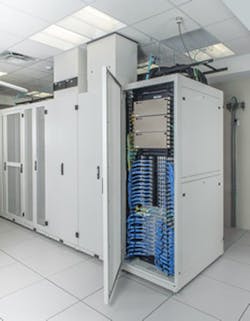Step 7: Designing Equipment Areas
Whether the data center site has been selected or not, there are several philosophies when it comes to deciding how the equipment areas of the data center should be built . As discussed previously, tier level support is part of this equation. Some key points to consider are cable plant design and limitations in relation to switch location, business unit pods or shared pods, cabinet design and who will be allowed to perform moves, adds and changes in the data center. These points need to be tailored to meet the needs of the business.
When designing the data center, avoid exclusive cabinets and pods of equipment. Having a standardized configuration for a cabinet or pod provides benefits such as creating a specialized customer part number with a manufacturer or distributor, and ease of budgeting and ordering for future expansion. The configuration can be reviewed and adjusted when technology changes occur. It is also smart to look for ways to eliminate on-site construction labor, shipping material disposal and transportation costs by taking advantage of manufacturer or distributor services to pre-configure as many components as possible. Prior to any request for pricing, make sure to inform contractors of the use of these services or any other labor-saving technology, such as pre-terminated cables.
The easiest place to start is with a basic server cabinet. Using the data from the requirements gathering phase, determine what the cabinet will look like. Considerations might include:
• Width, depth and number of RU spaces
• Type of doors (i.e., single or split)
• Cable entry (i.e., top or bottom)
• Ability to modify the cabinet or re-deploy as another type of cabinet
• Cable management
• Equipment positioning
• Power distribution unit (PDU) size, intelligence, type and number of outlets
• Cabinet color
These same considerations apply for networking cabinets, storage cabinets and almost any other cabinet used to house IT equipment. Keeping the number of types of cabinets to a minimum can help simplify design and expansion of the data center.

